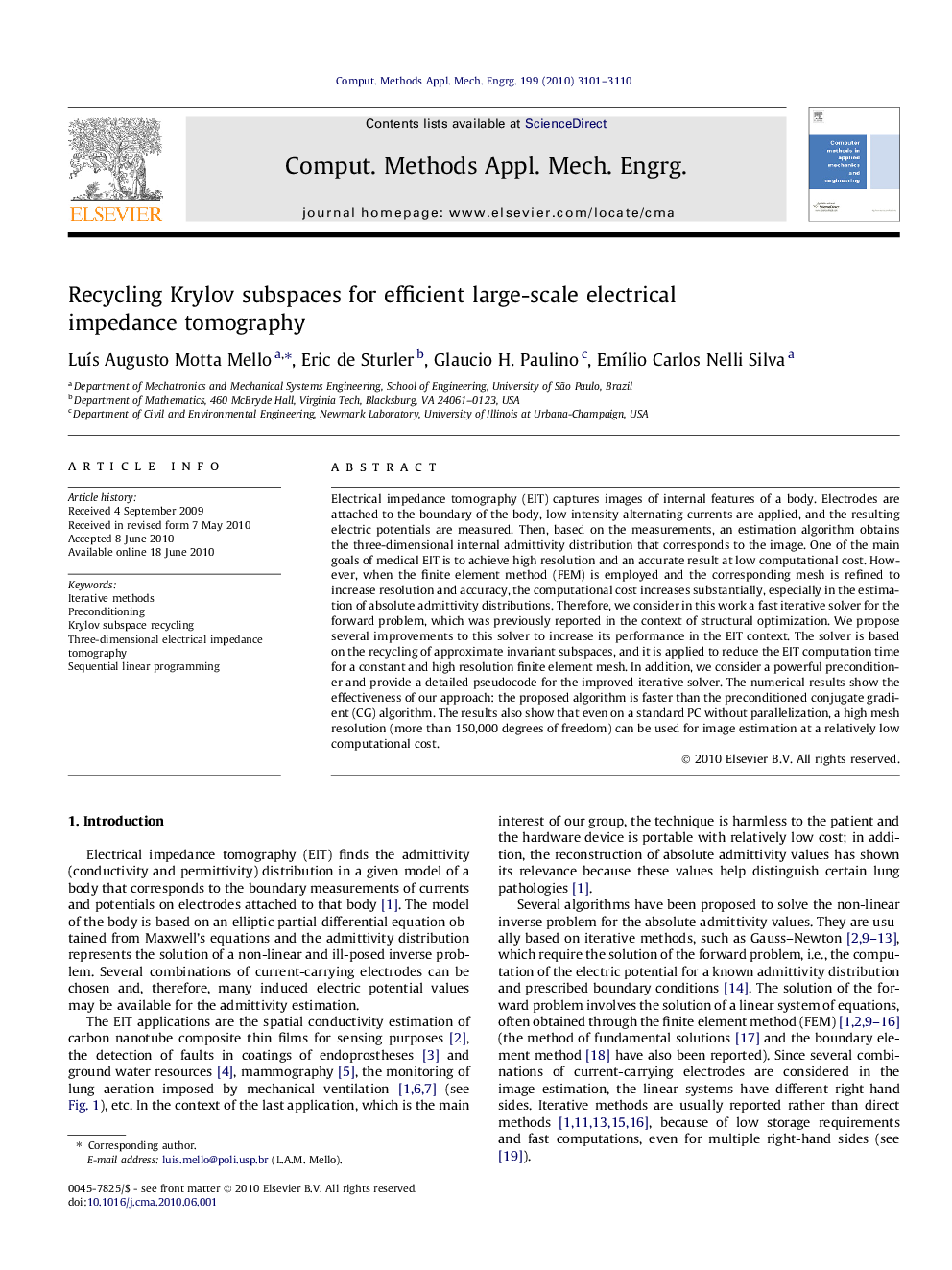| Article ID | Journal | Published Year | Pages | File Type |
|---|---|---|---|---|
| 498809 | Computer Methods in Applied Mechanics and Engineering | 2010 | 10 Pages |
Electrical impedance tomography (EIT) captures images of internal features of a body. Electrodes are attached to the boundary of the body, low intensity alternating currents are applied, and the resulting electric potentials are measured. Then, based on the measurements, an estimation algorithm obtains the three-dimensional internal admittivity distribution that corresponds to the image. One of the main goals of medical EIT is to achieve high resolution and an accurate result at low computational cost. However, when the finite element method (FEM) is employed and the corresponding mesh is refined to increase resolution and accuracy, the computational cost increases substantially, especially in the estimation of absolute admittivity distributions. Therefore, we consider in this work a fast iterative solver for the forward problem, which was previously reported in the context of structural optimization. We propose several improvements to this solver to increase its performance in the EIT context. The solver is based on the recycling of approximate invariant subspaces, and it is applied to reduce the EIT computation time for a constant and high resolution finite element mesh. In addition, we consider a powerful preconditioner and provide a detailed pseudocode for the improved iterative solver. The numerical results show the effectiveness of our approach: the proposed algorithm is faster than the preconditioned conjugate gradient (CG) algorithm. The results also show that even on a standard PC without parallelization, a high mesh resolution (more than 150,000 degrees of freedom) can be used for image estimation at a relatively low computational cost.
